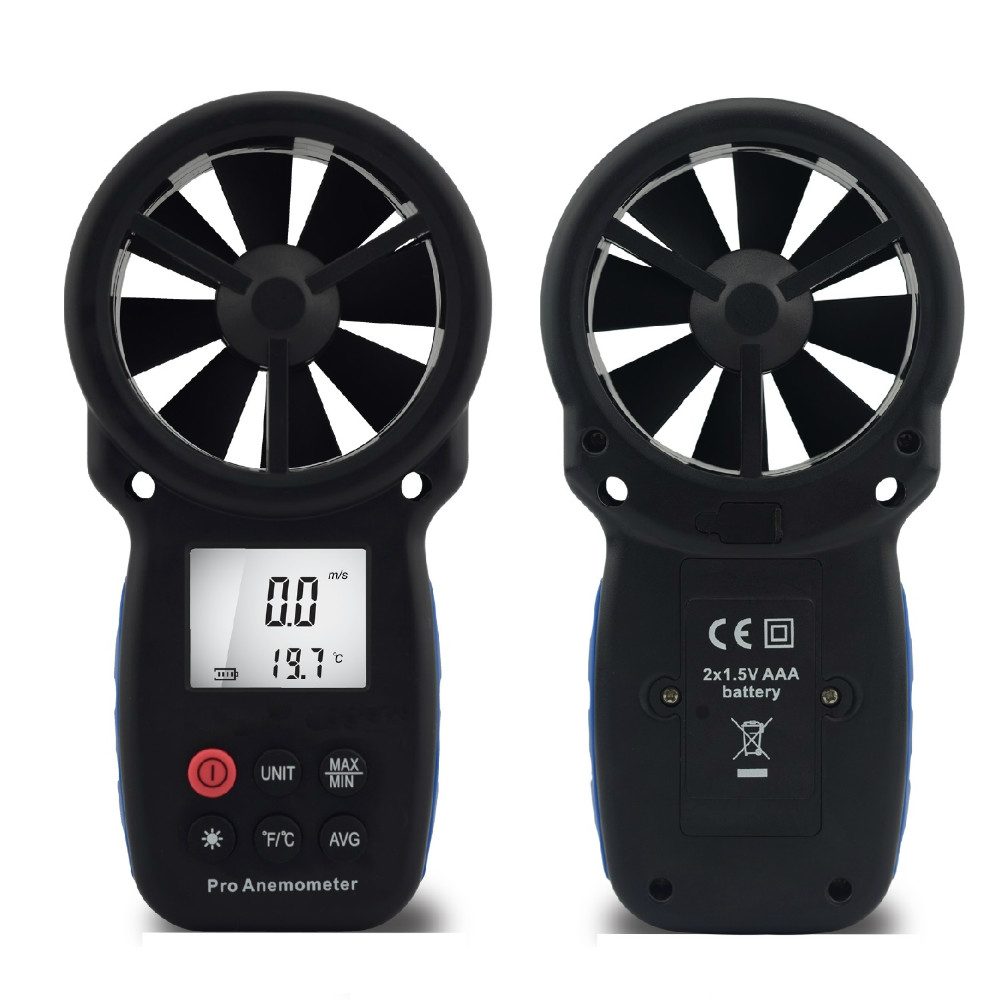The Role of an Anemometer in Improving Security for Outdoor Activities
The Role of an Anemometer in Improving Security for Outdoor Activities
Blog Article
All You Required to Learn About Anemometers: Just How They Work, Why They Issue, and Where to Utilize Them
Anemometers, though commonly forgotten in the world of clinical tools, play a crucial duty in numerous areas, providing beneficial insights right into wind rate and air flow patterns. Recognizing the auto mechanics behind these tools is vital for any individual looking for to harness the power of this information. From meteorologists tracking climate patterns to engineers designing structures with wind lots in mind, the applications of anemometers are significant and diverse. As we look into the details of anemometer technology, we will certainly discover the internal operations of these devices, their relevance, and the essential considerations when choosing the ideal anemometer for particular applications.

Anemometer Fundamentals
An important tool utilized to gauge wind speed and direction, the anemometer plays a crucial role in weather forecasting and numerous industries. An anemometer generally includes three or 4 cups that rotate in the wind, a vane that directs into the wind, and sensing units to track the activities or rotations. By calculating the turnings or motions over a details amount of time, the anemometer can figure out wind speed. The vane aids establish wind direction by aiming into the wind, giving beneficial data for climate projecting, aviation, maritime procedures, ecological surveillance, and wind power applications.
There are different kinds of anemometers offered, consisting of cup anemometers, vane anemometers, hot-wire anemometers, and sonic anemometers, each with its one-of-a-kind functions and applications. Mug anemometers are typically used for standard wind speed measurements, while vane anemometers are favored for directional measurements. Hot-wire anemometers appropriate for low airspeeds, and sonic anemometers are excellent for high-precision measurements in study and commercial setups. Understanding the basics of anemometers is vital for precise wind data collection and evaluation throughout different markets.
Principles of Anemometer Procedure
Structure on the fundamental understanding of anemometer fundamentals, the principles of anemometer procedure clarify the auto mechanics behind wind rate and instructions measurements. Mug anemometers, for circumstances, have three or more cups that record the wind, triggering them to spin quicker as the wind speed increases. Hot-wire anemometers count on a heated wire that cools down as wind passes over it, with the rate of cooling down establishing the wind speed.
Significance of Anemometers
The relevance of anemometers in meteorology and numerous sectors can not be overemphasized. Anemometers play a critical role in gauging wind speed and instructions, giving necessary information for climate forecasting, environment studies, ecological surveillance, and air travel operations. Meteorologists rely upon anemometers to gather accurate wind data, assisting them recognize weather patterns, forecast storms, and problem timely warnings to the public. In industries such as construction, farming, renewable resource, and maritime operations, anemometers are made use of to optimize procedures, make certain safety, and boost efficiency. Wind farm operators make use of see this anemometers to assess wind conditions and optimize power manufacturing from wind turbines. In the maritime market, anemometers help ship navigation by giving real-time wind information to captains, helping them make notified decisions to guarantee safe voyages. In general, anemometers are essential devices that add dramatically to safety, efficiency, and notified decision-making in meteorology and a large range of industries.
Applications Throughout Different Industries
In the eco-friendly power sector, anemometers play an important function in analyzing wind conditions for wind ranch positionings, making certain optimum energy manufacturing. Industries like building and mining use anemometers to keep an eye on wind speeds, important for security protocols, especially when functioning at elevations or in open-pit mines where solid winds can posture hazards. In agriculture, anemometers help farmers in handling crop splashing by offering real-time data on wind speed to stay clear of drift.

Picking the Right Anemometer for Your Needs
For general purposes, a cup anemometer is appropriate for measuring wind speed, while a vane anemometer offers wind direction data. Hot-wire anemometers are excellent for low airspeed measurements, and ultrasonic anemometers offer high precision and durability.

Verdict
In final thought, anemometers play a vital role in measuring wind rate More Help and direction across numerous right here sectors. It is essential to take into consideration the importance of anemometers in order to make enlightened decisions when choosing the most suitable gadget for gauging wind conditions.
There are various types of anemometers available, consisting of cup anemometers, vane anemometers, hot-wire anemometers, and sonic anemometers, each with its distinct functions and applications. Mug anemometers are commonly made use of for standard wind speed dimensions, while vane anemometers are favored for directional dimensions. Hot-wire anemometers are ideal for low airspeeds, and sonic anemometers are optimal for high-precision dimensions in study and commercial settings.Building on the fundamental understanding of anemometer basics, the concepts of anemometer procedure clarify the mechanics behind wind rate and direction measurements. For basic objectives, a cup anemometer is ideal for measuring wind speed, while a vane anemometer offers wind direction information.
Report this page